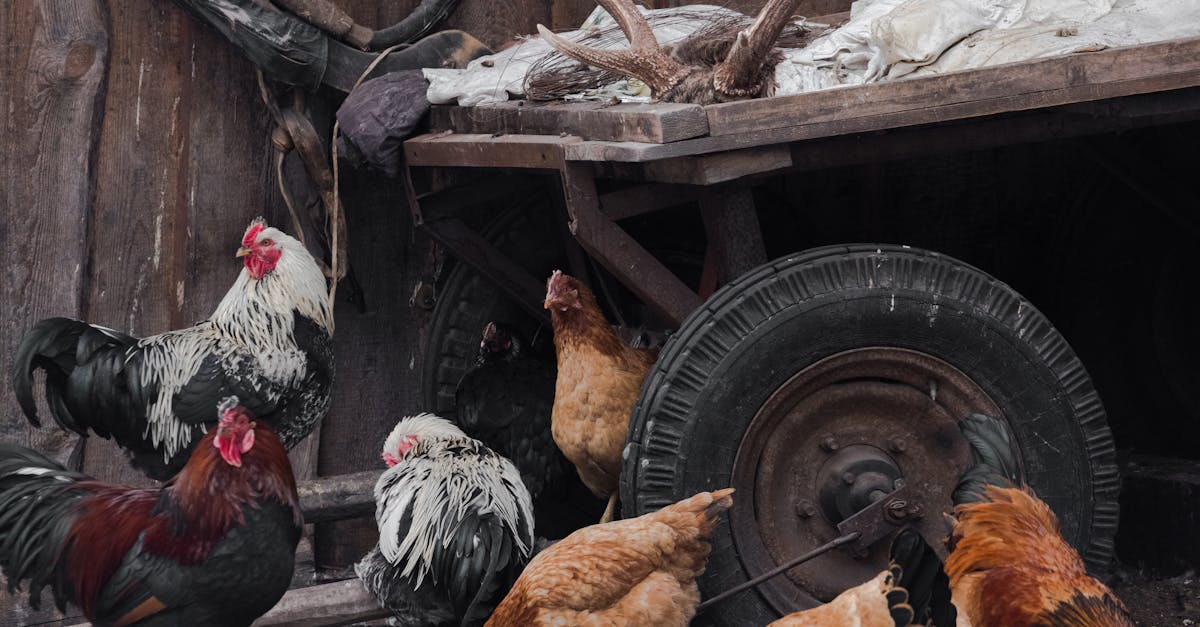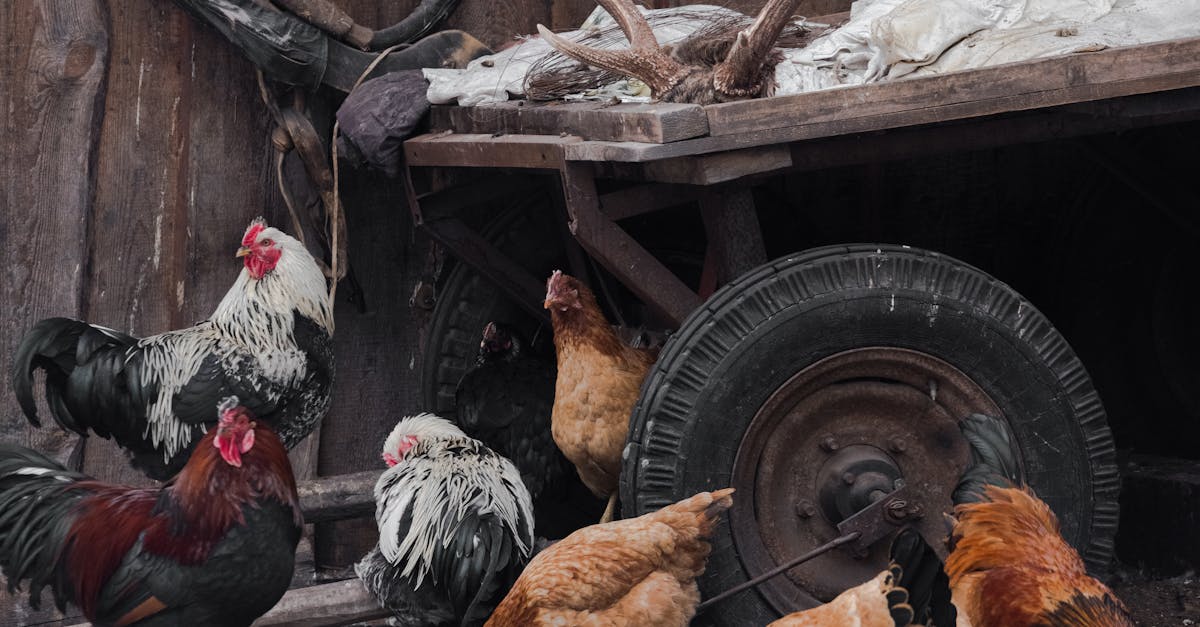The Importance of Proper Chicken Fencing
Raising chickens can be a joyous and rewarding endeavor. However, ensuring that your flock is safe and contained is crucial to both their well-being and your peace of mind. To achieve this, chicken fencing is essential. This blog post provides comprehensive insights into the importance of chicken fencing, the challenges it addresses, the benefits it offers, and actionable steps to set up your own secure chicken fence. 🐔
A Common Problem Faced by Poultry Farmers
Rural and urban poultry farmers alike often face the challenge of keeping their chickens contained within a specific area. Chickens are naturally curious creatures that love to roam, scratch, and forage. If left unchecked, they can destroy gardens, get lost, or fall prey to predators. An effective chicken fence not only contains the flock but also protects them from predators and harsh weather conditions.
Ensuring Safety and Convenience
Chicken fencing addresses multiple needs:
- Containment: Prevents chickens from straying into dangerous or unwanted areas.
- Protection: Safeguards hens from predators like foxes, raccoons, and hawks.
- Health: Limits exposure to harmful substances or plants and restricts their access to areas where they might pick up diseases.
- Convenience: Simplifies management and monitoring of the flock.
Setup and Material Considerations for Chicken Fencing
Types of Chicken Fencing Materials
Choosing the appropriate fencing material is vital for the effectiveness of your setup. Here are the common options:
1. Chicken Wire
- Pros: Affordable, lightweight, and fairly easy to install.
- Cons: Not very sturdy; persistent predators can chew through it.
2. Hardware Cloth
- Pros: Extremely durable and predator-proof.
- Cons: More expensive than chicken wire; harder to install due to its rigidity.
3. Electric Poultry Netting
- Pros: Offers both containment and predator protection.
- Cons: Requires a power source; can be more complex to set up.
Fence Height and Depth
Height and depth are crucial for a successful chicken fence:
-
Fence Height: Generally, 4-6 feet tall fences are adequate to keep chickens in and most land predators out.
-
Underground Barrier: Burying a portion of the fence (about 1 foot) underground helps deter burrowing predators.
Gates and Entry Points
Always include secure gates and entry points for easy access to your chickens:
- Latches: Use predator-proof latches, such as carabiners or padlocks.
- Size: Ensure the gate is large enough for maintenance equipment but secure enough to prevent escape.
Building Your Chicken Fence: Step-by-Step Guide
Step 1: Planning and Measuring Your Area
Use a measuring tape and stakes to outline the desired area for your chicken run. Consider the number of chickens and the amount of space they need to roam comfortably.
Step 2: Procuring Materials
Based on your assessment, procure the materials. This typically includes your chosen fencing material, posts, ties, and a gate.
Step 3: Installing Fence Posts
- Digging Holes: Use a post-hole digger to dig holes for the fence posts, roughly 6-8 feet apart.
- Setting Posts: Place posts into the holes and fill with cement or dirt, ensuring they are level and sturdy.
Step 4: Attaching the Fencing Material
- Stretching the Fence: Start from one end and stretch the fencing material across the posts.
- Securing: Use ties or staples to secure the fencing material to the posts. Ensure the bottom is buried at least a foot underground.
Step 5: Installing the Gate
Attach the gate to one of the posts and ensure it swings freely. Install secure latches to keep it closed when not in use.
Step 6: Reviewing Safety and Security Measures
Inspect the fence thoroughly for any gaps or weak points. Make sure all edges are firmly secured and the gate’s locking mechanism is reliable.
Benefits of High-Quality Chicken Fencing
Enhanced Protection
A high-quality chicken fence offers unmatched protection against predators. By providing a substantial barrier, it minimizes the risk of predator attacks, ensuring the safety of your precious flock.
Improved Egg Production
Stress levels in chickens directly affect their egg-laying capabilities. By creating a safe and secure environment, chickens are more relaxed, which in turn can lead to higher egg production.
Reduction of Chick Losses
From natural threats to the dangers posed by urban environments, well-secured chicken fencing significantly reduces chick mortality rates. This leads to a stable and growing flock.
Long-Term Cost Efficiency
While the initial investment in high-quality fencing materials may seem substantial, it pays off in the long run through reduced losses and lower maintenance costs.
Effective Chicken Fence Maintenance
Regular Inspections
Conduct regular inspections of the fence line to identify and repair any damage. Pay special attention after severe weather conditions to ensure no breaches have occurred.
Cleaning and Upkeeping the Area
Maintain the area around the fence by removing debris and trimming vegetation. Overgrown plants can damage the fence and also provide cover for predators.
Seasonal Adjustments
Different seasons call for different adjustments. For example, check for rust or wear after the rainy season and ensure the fence is upright and sturdy after winter.
Repairing and Reinforcing
Immediate repairs are critical. Reinforce weak spots with extra material, and replace broken segments promptly to maintain the integrity of the fence.
Future-Proofing Your Chicken Fence
Upgrading Materials
Over time, consider upgrading to more durable materials or adding electric netting for enhanced protection. Monitoring developments in fencing technology can provide new solutions to old problems.
Adapting to Flock Growth
A growing flock needs more space. Plan and expand your chicken run as your flock increases, ensuring they have ample room to prevent overcrowding.
Adding Additional Features
Enhance the safety and utility of your chicken fence:
- Automatic Doors: Install automatic doors for the coop that close at dusk and open at dawn.
- Shade and Shelter: Add shaded areas or shelters within the fenced area to protect chickens from extreme weather.
- Vegetation: Plant chicken-friendly shrubs and plants inside the run for additional food sources and cover.
Creating a Secure Haven for Your Flock
Chicken fencing is far more than just a physical barrier; it is an essential element in creating a secure and nurturing environment for your flock. Whether you are a seasoned poultry farmer or a backyard hobbyist, investing time, effort, and resources into proper chicken fencing pays dividends in the health, safety, and productivity of your chickens.
Take Action Today
By following the guidelines outlined in this post, you can construct, maintain, and future-proof a chicken fence that meets your needs and protects your chickens. Don’t leave the safety of your flock to chance. Start planning your chicken fencing project today, and take the first step towards a more secure and fulfilling poultry farming experience. 🐓
For additional resources and guides on poultry farming, check out these useful links:
Ensuring that your chicken fence is properly constructed and maintained results in a happy, healthy, and productive flock. Follow the steps and tips provided, and revel in the comfort of knowing your chickens are secure in their homestead.











